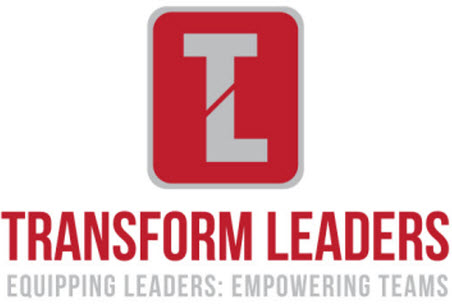
Brian Clark says, “Building trust is bigger than tactics – it’s your entire mission”. Do you believe that?
We know that trust is the basis of all effective leaders and teams. Without trust everything is hard and unproductive. When it comes to building a team that can work efficiently together, accomplish mutual goals, and still maintain a good morale while doing so, there’s no more significant quality than trust. Trust allows you to delegate a task without worrying whether it will get done. It allows for faster, more open communication, and gives people a sense that they truly belong within your organization.
But trust doesn’t come naturally or easily, and it’s a leaders job to inspire and facilitate trust within the team.
Trust means to rely on someone else to do the right thing.
When the leader establishes trust within the team, it truly shows. Team members feel secure in sharing their opinions without the fear of judgment or retribution, freely share information and openly collaborate on projects and know that if the leader pushes them, he does so with their best interests in mind. The result? Highly motivated and productive workforce.
When leaders think about building trust rarely do they start with themselves. The reason, no one thinks they are not trust worthy. If you asked a leader, “Are you trustworthy?” you can’t imagine anyone saying, “No”.
The trouble is for people in your team, trustworthiness is mostly in the eye of the beholder. It’s essential to your reputation, which depends on what other people think of you, not what you think of yourself.
And while the idea may make us uncomfortable, trustworthiness is like just about any other trait–meaning it’s a matter of degrees rather than an all-or-nothing quality. Some people have it more than others do.
For a leader, trust is built by congruence, between what you say, the way you behave and what you do.
To reflect on how you are modelling trust within your team, or where there is room for growth consider the 13 Behaviours of a High Trust Person that Stephen M.R. Covey has developed in his book, The Speed of Trust.
CHARACTER BEHAVIOURS
1. TALK STRAIGHT
Be honest. Tell the truth. Let people know where you stand. Use simple language. Call things what they are. Demonstrate integrity. Don’t manipulate people nor distort facts. Don’t spin the truth. Don’t leave false impressions.
2. DEMONSTRATE RESPECT
Genuinely care for others. Show you care. Respect the dignity of every person and every role. Treat everyone with respect, especially those who can’t do anything for you. Show kindness in the little things. Don’t fake caring. Don’t attempt to be “efficient” with people.
3. CREATE TRANSPARENCY
Tell the truth in a way people can verify. Get real and genuine. Be open and authentic. Err on the side of disclosure. Operate on the premise of, “What you see is what you get.” Don’t have hidden agendas. Don’t hide information.
4. RIGHT WRONGS
Make things right when you’re wrong. Apologize quickly. Make restitution where possible. Practice “service recoveries.” Demonstrate personal humility. Don’t cover things up. Don’t let personal pride get in the way of doing the right thing.
5. SHOW LOYALTY
Give credit to others. Speak about people as if they were present. Represent others who aren’t there to speak for themselves. Don’t badmouth others behind their backs. Don’t disclose others’ private information.
COMPETENCE BEHAVIOURS
6. DELIVER RESULTS
Establish a track record of results. Get the right things done. Make things happen. Accomplish what you’re hired to do. Be on time and within budget. Don’t overpromise and under deliver. Don’t make excuses for not delivering.
7. GET BETTER
Continuously improve. Increase your capabilities. Be a constant learner. Develop feedback systems—both formal and informal. Act upon the feedback you receive. Thank people for feedback. Don’t consider yourself above feedback. Don’t assume your knowledge and skills will be sufficient for tomorrow’s challenges.
8. CONFRONT REALITY
Take issues head on, even the “undiscussables.” Address the tough stuff directly. Acknowledge the unsaid. Lead out courageously in conversation. Remove the “sword from their hands.” Don’t skirt the real issues. Don’t bury your head in the sand.
9. CLARIFY EXPECTATIONS
Disclose and reveal expectations. Discuss them. Validate them. Renegotiate them if needed and possible. Don’t violate expectations. Don’t assume that expectations are clear or shared.
10. PRACTISE ACCOUNTABILITY
Hold yourself accountable. Hold others accountable. Take responsibility for results. Be clear on how you’ll communicate how you’re doing—and how others are doing. Don’t avoid or shirk responsibility. Don’t blame others or point fingers when things go wrong.
CHARACTER AND COMPETENCE BEHAVIOURS
11. LISTEN FIRST
Listen before you speak. Understand. Diagnose. Listen with your ears…and your eyes and heart. Find out what the most important behaviours are to the people you’re working with. Don’t assume you know what matters most to others. Don’t presume you have all the answers—or all the questions.
12. KEEP COMMITMENTS
Say what you’re going to do. Then do what you say you’re going to do. Make commitments carefully and keep them at all costs. Make keeping commitments the symbol of your honour. Don’t break confidences. Don’t attempt to “PR” your way out of a commitment you’ve broken.
13. EXTEND TRUST
Demonstrate a propensity to trust. Extend trust abundantly to those who have earned your trust. Extend trust conditionally to those who are earning your trust. Learn how to appropriately extend trust to others based on the situation, risk, and character/competence of the people involved. But have a propensity to trust. Don’t withhold trust because there is risk involved.
If you want to build trust in your team and in your leadership email me at craig@transformleader.com.au for a strategy call. I’ll help you pinpoint an intervention/s that will build trust.
